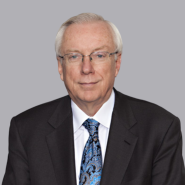Cardex – Patent Eligibility – It's The Claims That Matter
- July 25, 2022
- Article
Associated People
Associated Technologies
On July 18 the Federal Circuit in Cardex, Inc. v. Eurofins Viracor, Inc., affirmed the district court decision finding that diagnostic method claims directed to detecting organ transplant rejections in U.S.P.s 8,703,652 (‘652), 9,845,497 (‘497), and 10,329,607 (‘607) were not patent eligible. The following claim from ‘652 is representative of the claims on appeal, emphasis in the decision:
1. A method for detecting transplant rejection, graft dysfunction, or organ failure, the method comprising:
(a) providing a sample comprising [cfDNA] from a subject who has received a transplant from a donor;
(b) obtaining a genotype of donor-specific polymorphisms or a genotype of subject- specific polymorphisms, or obtaining both a genotype of donor-specific polymorphisms and subject-specific polymorphisms, to establish a polymorphism profile for detecting donor [cfDNA], wherein at least one single nucleotide polymorphism (SNP) is homozygous for the subject if the genotype comprises subject-specific polymorphisms comprising SNPs;
(c) multiplex sequencing of the [cfDNA] in the sample followed by analysis of the sequencing results using the polymorphism profile to detect donor [cfDNA] and subject [cfDNA]; and
(d) diagnosing, predicting, or monitoring a transplant status or outcome of the subject who has received the transplant by determining a quantity of the donor [cfDNA] based on the detection of the donor [cfDNA] and subject [cfDNA] by the multiplexed sequencing, wherein an increase in the quantity of the donor [cfDNA] over time is indicative of transplant rejection, graft dysfunction or organ failure, and wherein sensitivity of the method is greater than 56% compared to sensitivity of current surveillance methods for cardiac allograft vasculopathy (CAV).
The concept of using cell free DNA (cfDNA) to monitor rejection was known as admitted on page 1of Cardex’s brief in the period following transplantation to determine the dose and duration administering the anti-rejection drugs routinely administered. The problem the invention sought to solve was how to non-invasively monitor the status of the transplant over time once the administration of the anti-rejection drugs had ceased and the transplanted organ was functioning normally. Prior to the invention the monitoring required invasive procedures to determine if rejection was occurring before any symptoms appeared. It was known that if the organ donor’s DNA increased in the recipients increased that was marker for organ rejection. However, this technique only worked for females who received the organ from a male. Other techniques were not successful such as detection of donor-specific human leukocyte antigen (HLA) alleles in circulating DNA but the limited ability to distinguish between donor and recipient makes it impractical. The invention by in effect taking a fingerprint of the donor DNA by genotyping it allowed for a simple blood test to monitor the status of a transplanted organ by monitoring the amount of donor cfDNA in the blood.
The techniques for performing the analysis were old, it was the use of them in a new way which was the invention. However, as can be seen from the highlighted claim terms the claims did not focus on the method of monitoring the transplanted organ but rather on the relationship between the cfDNA and the transplant. The technique involved steps not recited in the claims, in particular the monitoring of the status of the transplanted organ non-invasively at least once a year to detect the organ’s status by analyzing for the content of donor cfDNA. One detected organ rejection before symptoms occurred by noting whether the concentration increased from a previous analysis. Step (d) in the claim hints at this but is not limited to it. Nor does the claim include the next step which is to perform the invasive test to confirm the rejection or administration of the anti-rejection drug. The combination of steps was not conventional in the art and were novel.
The takeaway is to claim steps which incorporate the natural event into a non-conventional sequence. In drafting diagnostic claims, one must resist the temptation for broad claims drawn primarily to the naturally occurring event.Recent Publications
Federal Circuit Holds Prosecution History Disclaimer Applicable to Design Patents
by Sana Tahir, Law Clerk and Andrew Ollis, Partner










 Counseling & Strategic Advice
Counseling & Strategic Advice IP Transactions
IP Transactions Litigation
Litigation PTAB Proceedings
PTAB Proceedings Technology Transfer
Technology Transfer Trademark & Designs
Trademark & Designs U.S. Patent Procurement (Application Drafting & Prosecution)
U.S. Patent Procurement (Application Drafting & Prosecution)








